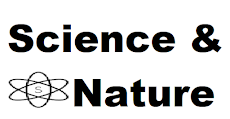The James Webb Space Telescope (JWST) has been described as the most powerful eye for humans in space — and it's now fulfilling that role in a manner no one quite anticipated. In a recent set of observations, the telescope has provided data that apparently defies the established laws of physics. Scientists are still trying to navigate the implications, but the accumulation of evidence grows: something deep within our knowledge of the universe might have to shift.
Galaxies That Shouldn’t Exist
It all began when JWST looked back to the very early universe — just 300 million years after the Big Bang. What it saw there astounded astronomers. The telescope detected fully formed galaxies that seemed too big, too bright, and too neatly structured to have appeared so soon after the birth of the universe. In our current theories, those sorts of galaxies ought to have taken billions of years to develop — not a few hundred million.
These ancient galaxies also have unexpectedly high mass and old stars, which defies old expectations established by the standard model of cosmology. A description of the discovery was given by an astrophysicist as "like finding a tree that's already 100 years old in a nursery of saplings."
The Cosmic Expansion Question
The JWST data also added to the enigma of the "Hubble tension" — an increasing discord between various estimates of the universe's expansion rate. The Hubble Space Telescope estimated one value by observing nearby galaxies. Meanwhile, the JWST's more accurate figures from the early universe are implying something rather different. These discrepancies indicate a possible fissure in the ΛCDM model (Lambda Cold Dark Matter), the prevailing theory of cosmology.
If this tension persists, it could have profound implications: either dark energy — the elusive force thought to be driving the acceleration of the universe's expansion — isn't working the way we assumed. Or something more extreme: that general relativity, Einstein's cornerstone theory of gravity, may not be entirely valid on cosmic scales.
Are the Laws of Physics Local?
Arguably the most brain-twisting implication of the JWST revelations is that the laws of physics may not be universal. A number of galaxies in the distant past seem to exhibit alternative chemical signatures to those predicted — suggesting that basic constants such as the force of gravity or how light behaves can change over time or space. If true, this would turn one of the assumptions of physics on its head.
Some physicists are already demanding the replacement of alternative universe models — such as altered gravity theories, new types of dark matter, or even a multiverse. Others caution that initial data is misleading and that JWST is running at the bleeding edge of the detection limits.
A Watershed Moment for Cosmology?
Whether they foretell an outright revolution or an enhancement of existing theories, this is certain: the James Webb Space Telescope has embarked us on a new era in humanity's quest to grasp the universe. Physicists have been working under the safe confines of the standard model for decades. JWST has now taken us to the limits of those confines — and might be asking us to go beyond.
In the next few years, as more information comes in
and hypotheses are broken, we might think back on this moment as the start of a
new scientific age — where our understanding of time, space, and even reality
itself is revolutionized.




.jpg)
0 Comments